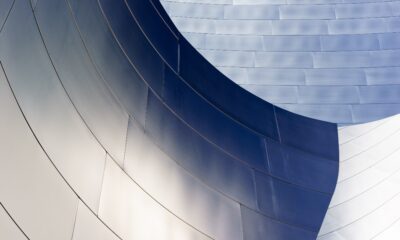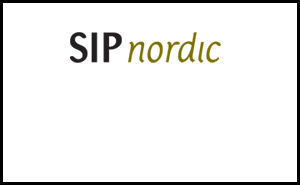Analys
SIP Nordic – Nytt år, nya möjligheter
 Samtidigt som det är dags att summera ett ganska ljummet råvaruår är det hög tid att rikta blickarna mot 2012 års spåkula. Kommer industrimetallpriserna hålla emot, fortsätter guldet sin lyckliga resa under 2012 och hur heta är egentligen jordbruksråvarorna? Oavsett vad har vi ett spännande år framför oss där mycket kommer att styras av oron för en Eurokris. Råvaror har mer och mer blivit en självklar del av portföljen och samtidigt som de finansiella marknaderna kämpar mot extrem turbulens har råvaror klivit fram som räddare i nöden. Aktiemarknaden kommer troligtvis att fortsätta att famla i mörkret, ständigt hemsökta av oron om en europeisk statsskuldskris såväl som rädsla av en återkommande global recession. Det som talar för att råvaror, generellt, kommer att gå motsatt håll är bland annat tillväxtmarknadernas fortsatta tillväxt, försvagning av dollarn samt en fortsatt obalans i tillgång och efterfrågan.
Samtidigt som det är dags att summera ett ganska ljummet råvaruår är det hög tid att rikta blickarna mot 2012 års spåkula. Kommer industrimetallpriserna hålla emot, fortsätter guldet sin lyckliga resa under 2012 och hur heta är egentligen jordbruksråvarorna? Oavsett vad har vi ett spännande år framför oss där mycket kommer att styras av oron för en Eurokris. Råvaror har mer och mer blivit en självklar del av portföljen och samtidigt som de finansiella marknaderna kämpar mot extrem turbulens har råvaror klivit fram som räddare i nöden. Aktiemarknaden kommer troligtvis att fortsätta att famla i mörkret, ständigt hemsökta av oron om en europeisk statsskuldskris såväl som rädsla av en återkommande global recession. Det som talar för att råvaror, generellt, kommer att gå motsatt håll är bland annat tillväxtmarknadernas fortsatta tillväxt, försvagning av dollarn samt en fortsatt obalans i tillgång och efterfrågan.
Råvaror i det långa loppet
Råvaror har haft en otrolig utveckling sedan starten av detta millennium och om historien upprepar sig har råvaror, trots det oroliga börsläget, många goda år framför sig. Råvaror och aktiemarknaden har sedan 1870 alternerat om vilken marknad som presterat bäst. Under 1980 och 90 talet florerade aktiemarknaden samtidigt som råvarupriserna låg på bottennivåer. Detta gjorde att investeringar i gruvor, oljereservoarer och jordbruk inte ansågs sexiga nog att investera i. Och det är just detta som gett upphov till den positiva trend råvaror är i nu. Pga. Av bristande investeringar har vi i nuläget en obalans i tillgång och efterfrågan vilket driver upp priserna i de flesta råvarorna.
Rädsla trycker ned basmetallerna
Nu ska man ju inte titta sig blind på historisk data men det finns en del intressanta iakttagelser att beakta. En intressant iakttagelse är den negativa korrelationen mellan VIX index, ofta kallad fear index, och basmetallernas prisutveckling. En hög volatilitet betyder allt som oftast en nedåtgående aktietrend vilket ger avtryck i basmetallernas utveckling då marknaden tror på en avsvalnande tillväxt. Nu har VIX Index börjat stabiliseras och är på väg ned till mer normala nivåer. Kommer detta att resultera i att basmetallerna återigen klättrar norrut? Ja, för vissa metaller så finns det ett flertalet punkter som talar för det.
Vad gäller då för 2012?
Det mest troliga är att råvaror kommer att använda 2012 för att hämta andan för att sedan spänna bågen ordentligt inför 2013 hjälpta av en mer stabil ekonomisk utsikt samt ett åter ökande tillgångsunderskott. Trots detta finns det många guldkorn under 2012 och kom ihåg, man behöver inte alltid tro på uppgång.
Råvaruåret 2012 ser ut att bli mycket svårtippat då en ökad korrelation med aktiemarknaden talar för stagnerade prisutvecklingar. Jag sticker dock ut hakan och tror på uppgång i guld och platina. En sista kommentar: Ur kaos kommer alltid möjligheter.
Alexander Frick
Råvaror – Update
Guld – Trygg hamn eller inte
- Guldets nedgång de senaste veckorna kan härledas till den generella panik som råder bland investerare. Investerare säljer av för att istället placera i likvida medel.
- Den stigande dollartrenden har också påverkat guldpriset negativt. Under 2012 kommer dollarkursen studeras noga för att se var guldet bär av.
- Guld har haft smått otroliga 11 plusår i rad. Nu när priset korrigerats nedåt talar mycket för att 2012 också blir ett bra år.
Silver
- Silver är en mer använd industrimetall än guld. Ändå har silver seglat upp som god tvåa i racet om den trygga hamnen.
- Överskottet av silver uppgår idag till 14%. Inför 2012 spås överskottet minska en aning till 9,8%.
- Trots ett högt pris på silver är det långt kvar till ATH på 100 dollar (1978)
- En fortsatt förstärkning av dollarn mot euron kommer troligtvis påverka negativt på silverpriset.
Platina
- Sydafrikanska producenter, som står för den största delen av platinaproduktion, kämpar med fackliga problem och elavbrott. Något som kommer inverka positivt på platinakursen.
- Fortsatt obalans i tillgång och efterfrågan talar för ett fortsatt högt pris.
- Nuvarande tillgängligt platina räcker endast till 16 månaders konsumtion. Tillgängligt platina har minskat med 30% sedan 2001.
Brent olja
- Oljelagerstatistiken pekar på mycket låga nivåer i USA. Någon som håller uppe oljepriset trots den globala oron.
- Oron i Iran och de andra OPEC länderna kompenserar det oroliga börsläget. Ett oljepris som konsoliderar under början av 2012 är inte osannolikt.
- Kan olja fortsätta hålla emot bra är det en av den mest intressanta placeringarna på marknaden. Om eller när den europeiska krisen får en lösning kommer oljepriset att påverkas positivt.
Koppar
- Strejker i stora gruvor i Peru och Indonesien fortsätter att begränsa utbudssidan. Det ska dock vara nära en lösning men produktion lär halta en aning.
- Koppar är mycket konjunkturskänsligt och följer ofta negativa aktietrender. Sedan början av året är koppar ned ca. 23%. Världens största kopparkonsument, Kina spås inte ha en lika hög tillväxt vilket kan påverka kopparpriset negativt.
- Trenden i kopparpriset är dock avtagande men analytikerkåren ser positivt på kopparn inför 2012.
Naturgas
- Naturgaspriserna fortsätter sin resa söderut, delvis pga. en högre medeltemperatur i USA. 51% av USAs hushåll använder naturgas för uppvärmning.
- Naturgas är en av de svåraste råvarorna att lagra. I priset på framtida leveranser ingår lagerkostnader, ränta och försäkring så trots att terminsmarknaden för naturgas ser ut att stå stilla, faller den fritt.
- Naturgas har tappat nästan 70% sedan finanskrisen men kan tappa ytterligare 50% för att matcha de låga nivåerna som rådde under 90-talet.
- Tekniskt handlas Naturgas i en negativ trend.
Majs
- Den globala majsproduktionen spås nå rekordnivåer under början av 2012 trots minskad produktion i USA.
- Det genomsnittliga priset spås vara 30 cents lägre än föregående räkenskapsår, enligt USDA.
- USDA spår en nedgång i majspriset, uppbackat av ökad produktion i såväl Kina som Europa och Kanada samt gynnsamma globala väderförhållande.
- Den tekniska trenden för majs är nedåtgående med en viktig stödnivå på 572 cents per bushel.
Vete
- Den globala produktionen av vete spås stiga med 5.3% under första halvåret 2012, samtidigt som efterfrågan endast kommer att öka 3.3%, med ett totalt överskott om 10 miljoner ton.
- Vete har tappat närmre 25% under de senaste året men fortfarande är priset på ca. 6 dollar tillräckligt attraktivt för att bönder ska fortsätta plantera. Ett ökande överskott är således att vänta.
- Ytterligare faktorer som talar för en fortsatt nedåtgående trend är rädslan för en global recession där oron för att världens största veteimportör, Kina, ska dra i handbromsen.
Socker
- Överskottet av socker har mer än halverats sedan maj.
- Dåliga väderförhållanden i Brasilien har fått analytiker att revidera sockerskörden med nästan 20%.
- Sockerproduktionen i Indien väntas fortfarande växa. Dock med blygsamma 8%, att jämföra med förra årets tillväxt på 25%.
Bomull
- Förra året rusade bomull med en nästan fördubblad kursuppgång. I år har läget varit annorlunda. Rekordskördar och svagare efterfrågan har tryckt ned bomullspriset rejält.
- Trots en kraftig nedgång ligger bomullspriset på historiskt höga nivåer och en halvering av bomullspriset är inte otänkbart.
- Det höga priset har återställt balansen i tillgång och efterfråga.
- Trots extrem torka i USA har goda skördar i Kina och Indien täckt upp detta bortfall.
- I dagsläget ligger genomsnittsinvesteraren i långa positioner men säljarna blir fler och fler.
[box]Denna uppdatering är producerat av SIP Nordic och publiceras i samarbete och med tillstånd på Råvarumarknaden.se[/box]
Ansvarsbegränsning
Detta produktblad utgör endast marknadsföring och har sammanställts av SIP Nordic Fondkommission AB.
Innehållet ger inte fullständig information avseende det finansiella instrumentet. Investerare uppmanas att del av prospekt och slutliga villkor, vilka finns tillgängliga på: www.rbsbank.se/markets, innan ett investeringsbeslut tas.
Förekommande exempel är simulerade och baseras på SIP Nordics egna beräkningar och antaganden, en person som använder andra data eller antaganden kan nå andra resultat. Administrativa avgifter och transaktionsavgifter påverkar den faktiska avkastningen.
Analys
Brent crude ticks higher on tension, but market structure stays soft

Brent crude has climbed roughly USD 1.5-2 per barrel since Friday, yet falling USD 0.3 per barrel this mornig and currently trading near USD 67.25/bbl after yesterday’s climb. While the rally reflects short-term geopolitical tension, price action has been choppy, and crude remains locked in a broader range – caught between supply-side pressure and spot resilience.

Prices have been supported by renewed Ukrainian drone strikes targeting Russian infrastructure. Over the weekend, falling debris triggered a fire at the 20mtpa Kirishi refinery, following last week’s attack on the key Primorsk terminal.
Argus estimates that these attacks have halted ish 300 kbl/d of Russian refining capacity in August and September. While the market impact is limited for now, the action signals Kyiv’s growing willingness to disrupt oil flows – supporting a soft geopolitical floor under prices.
The political environment is shifting: the EU is reportedly considering sanctions on Indian and Chinese firms facilitating Russian crude flows, while the U.S. has so far held back – despite Bessent warning that any action from Washington depends on broader European participation. Senator Graham has also publicly criticized NATO members like Slovakia and Hungary for continuing Russian oil imports.
It’s worth noting that China and India remain the two largest buyers of Russian barrels since the invasion of Ukraine. While New Delhi has been hit with 50% secondary tariffs, Beijing has been spared so far.
Still, the broader supply/demand balance leans bearish. Futures markets reflect this: Brent’s prompt spread (gauge of near-term tightness) has narrowed to the current USD 0.42/bl, down from USD 0.96/bl two months ago, pointing to weakening backwardation.
This aligns with expectations for a record surplus in 2026, largely driven by the faster-than-anticipated return of OPEC+ barrels to market. OPEC+ is gathering in Vienna this week to begin revising member production capacity estimates – setting the stage for new output baselines from 2027. The group aims to agree on how to define “maximum sustainable capacity,” with a proposal expected by year-end.
While the IEA pegs OPEC+ capacity at 47.9 million barrels per day, actual output in August was only 42.4 million barrels per day. Disagreements over data and quota fairness (especially from Iraq and Nigeria) have already delayed this process. Angola even quit the group last year after being assigned a lower target than expected. It also remains unclear whether Russia and Iraq can regain earlier output levels due to infrastructure constraints.
Also, macro remains another key driver this week. A 25bp Fed rate cut is widely expected tomorrow (Wednesday), and commodities in general could benefit a potential cut.
Summing up: Brent crude continues to drift sideways, finding near-term support from geopolitics and refining strength. But with surplus building and market structure softening, the upside may remain capped.
Analys
Volatile but going nowhere. Brent crude circles USD 66 as market weighs surplus vs risk

Brent crude is essentially flat on the week, but after a volatile ride. Prices started Monday near USD 65.5/bl, climbed steadily to a mid-week high of USD 67.8/bl on Wednesday evening, before falling sharply – losing about USD 2/bl during Thursday’s session.

Brent is currently trading around USD 65.8/bl, right back where it began. The volatility reflects the market’s ongoing struggle to balance growing surplus risks against persistent geopolitical uncertainty and resilient refined product margins. Thursday’s slide snapped a three-day rally and came largely in response to a string of bearish signals, most notably from the IEA’s updated short-term outlook.
The IEA now projects record global oversupply in 2026, reinforcing concerns flagged earlier by the U.S. EIA, which already sees inventories building this quarter. The forecast comes just days after OPEC+ confirmed it will continue returning idle barrels to the market in October – albeit at a slower pace of +137,000 bl/d. While modest, the move underscores a steady push to reclaim market share and adds to supply-side pressure into year-end.
Thursday’s price drop also followed geopolitical incidences: Israeli airstrikes reportedly targeted Hamas leadership in Doha, while Russian drones crossed into Polish airspace – events that initially sent crude higher as traders covered short positions.
Yet, sentiment remains broadly cautious. Strong refining margins and low inventories at key pricing hubs like Europe continue to support the downside. Chinese stockpiling of discounted Russian barrels and tightness in refined product markets – especially diesel – are also lending support.
On the demand side, the IEA revised up its 2025 global demand growth forecast by 60,000 bl/d to 740,000 bl/d YoY, while leaving 2026 unchanged at 698,000 bl/d. Interestingly, the agency also signaled that its next long-term report could show global oil demand rising through 2050.
Meanwhile, OPEC offered a contrasting view in its latest Monthly Oil Market Report, maintaining expectations for a supply deficit both this year and next, even as its members raise output. The group kept its demand growth estimates for 2025 and 2026 unchanged at 1.29 million bl/d and 1.38 million bl/d, respectively.
We continue to watch whether the bearish supply outlook will outweigh geopolitical risk, and if Brent can continue to find support above USD 65/bl – a level increasingly seen as a soft floor for OPEC+ policy.
Analys
Waiting for the surplus while we worry about Israel and Qatar

Brent crude makes some gains as Israel’s attack on Hamas in Qatar rattles markets. Brent crude spiked to a high of USD 67.38/b yesterday as Israel made a strike on Hamas in Qatar. But it wasn’t able to hold on to that level and only closed up 0.6% in the end at USD 66.39/b. This morning it is starting on the up with a gain of 0.9% at USD 67/b. Still rattled by Israel’s attack on Hamas in Qatar yesterday. Brent is getting some help on the margin this morning with Asian equities higher and copper gaining half a percent. But the dark cloud of surplus ahead is nonetheless hanging over the market with Brent trading two dollar lower than last Tuesday.

Geopolitical risk premiums in oil rarely lasts long unless actual supply disruption kicks in. While Israel’s attack on Hamas in Qatar is shocking, the geopolitical risk lifting crude oil yesterday and this morning is unlikely to last very long as such geopolitical risk premiums usually do not last long unless real disruption kicks in.
US API data yesterday indicated a US crude and product stock build last week of 3.1 mb. The US API last evening released partial US oil inventory data indicating that US crude stocks rose 1.3 mb and middle distillates rose 1.5 mb while gasoline rose 0.3 mb. In total a bit more than 3 mb increase. US crude and product stocks usually rise around 1 mb per week this time of year. So US commercial crude and product stock rose 2 mb over the past week adjusted for the seasonal norm. Official and complete data are due today at 16:30.
A 2 mb/week seasonally adj. US stock build implies a 1 – 1.4 mb/d global surplus if it is persistent. Assume that if the global oil market is running a surplus then some 20% to 30% of that surplus ends up in US commercial inventories. A 2 mb seasonally adjusted inventory build equals 286 kb/d. Divide by 0.2 to 0.3 and we get an implied global surplus of 950 kb/d to 1430 kb/d. A 2 mb/week seasonally adjusted build in US oil inventories is close to noise unless it is a persistent pattern every week.
US IEA STEO oil report: Robust surplus ahead and Brent averaging USD 51/b in 2026. The US EIA yesterday released its monthly STEO oil report. It projected a large and persistent surplus ahead. It estimates a global surplus of 2.2 m/d from September to December this year. A 2.4 mb/d surplus in Q1-26 and an average surplus for 2026 of 1.6 mb/d resulting in an average Brent crude oil price of USD 51/b next year. And that includes an assumption where OPEC crude oil production only averages 27.8 mb/d in 2026 versus 27.0 mb/d in 2024 and 28.6 mb/d in August.
Brent will feel the bear-pressure once US/OECD stocks starts visible build. In the meanwhile the oil market sits waiting for this projected surplus to materialize in US and OECD inventories. Once they visibly starts to build on a consistent basis, then Brent crude will likely quickly lose altitude. And unless some unforeseen supply disruption kicks in, it is bound to happen.
US IEA STEO September report. In total not much different than it was in January

US IEA STEO September report. US crude oil production contracting in 2026, but NGLs still growing. Close to zero net liquids growth in total.

-

 Nyheter4 veckor sedan
Nyheter4 veckor sedanMeta bygger ett AI-datacenter på 5 GW och 2,25 GW gaskraftverk
-

 Nyheter4 veckor sedan
Nyheter4 veckor sedanAker BP gör ett av Norges största oljefynd på ett decennium, stärker resurserna i Yggdrasilområdet
-

 Nyheter4 veckor sedan
Nyheter4 veckor sedanSommarens torka kan ge högre elpriser i höst
-

 Analys4 veckor sedan
Analys4 veckor sedanBrent edges higher as India–Russia oil trade draws U.S. ire and Powell takes the stage at Jackson Hole
-

 Nyheter3 veckor sedan
Nyheter3 veckor sedanMahvie Minerals är verksamt i guldrikt område i Finland
-

 Analys4 veckor sedan
Analys4 veckor sedanIncreasing risk that OPEC+ will unwind the last 1.65 mb/d of cuts when they meet on 7 September
-

 Nyheter3 veckor sedan
Nyheter3 veckor sedanNeil Atkinson spår att priset på olja kommer att stiga till 70 USD
-

 Nyheter2 veckor sedan
Nyheter2 veckor sedanEurobattery Minerals satsar på kritiska metaller för Europas självförsörjning





















